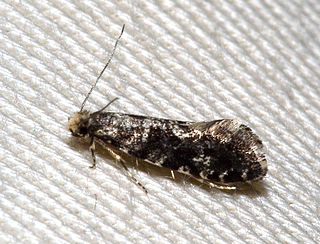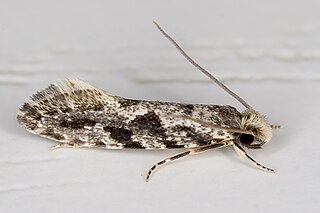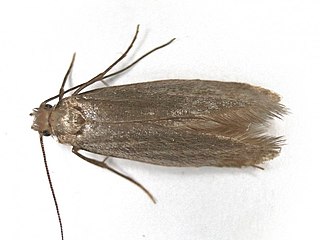
Athlete's foot, known medically as tinea pedis, is a common skin infection of the feet caused by a fungus. Signs and symptoms often include itching, scaling, cracking and redness. In rare cases the skin may blister. Athlete's foot fungus may infect any part of the foot, but most often grows between the toes. The next most common area is the bottom of the foot. The same fungus may also affect the nails or the hands. It is a member of the group of diseases known as tinea.

Tinea corporis is a fungal infection of the body, similar to other forms of tinea. Specifically, it is a type of dermatophytosis that appears on the arms and legs, especially on glabrous skin; however, it may occur on any superficial part of the body.

Fungal infection, also known as mycosis, is disease caused by fungi. Different types are traditionally divided according to the part of the body affected; superficial, subcutaneous, and systemic. Superficial fungal infections include common tinea of the skin, such as tinea of the body, groin, hands, feet and beard, and yeast infections such as pityriasis versicolor. Subcutaneous types include eumycetoma and chromoblastomycosis, which generally affect tissues in and beneath the skin. Systemic fungal infections are more serious and include cryptococcosis, histoplasmosis, pneumocystis pneumonia, aspergillosis and mucormycosis. Signs and symptoms range widely. There is usually a rash with superficial infection. Fungal infection within the skin or under the skin may present with a lump and skin changes. Pneumonia-like symptoms or meningitis may occur with a deeper or systemic infection.

Tineidae is a family of moths in the order Lepidoptera described by Pierre André Latreille in 1810. Collectively, they are known as fungus moths or tineid moths. The family contains considerably more than 3,000 species in more than 300 genera. Most of the tineid moths are small or medium-sized, with wings held roofwise over the body when at rest. They are particularly common in the Palaearctic, but many occur elsewhere, and some are found very widely as introduced species.

Dermatophytosis, also known as ringworm, is a fungal infection of the skin. Typically it results in a red, itchy, scaly, circular rash. Hair loss may occur in the area affected. Symptoms begin four to fourteen days after exposure. Multiple areas can be affected at a given time.

Monopis obviella is a species of tineoid moth. It belongs to the fungus moth family (Tineidae), and therein to the nominate subfamily Tineinae. It is the type species of Blabophanes, today treated as a junior synonym of the genus Monopis. M. crocicapitella was only separated from the present species in 1859, and is still frequently confused with it even by rather recent sources.

Nemapogon granella is a species of tineoid moth. It belongs to the fungus moth family (Tineidae), and therein to the subfamily Nemapogoninae. It is the type species of its genus Nemapogon, and via that also of the subfamily Nemapogoninae. It is also the type species of the proposed genera Brosis and Diaphthirusa, which are consequently junior objective synonyms of Nemapogon.

Tinea pellionella, the case-bearing clothes moth, is a species of tineoid moth in the family Tineidae, the fungus moths. This species has a cosmopolitan distribution, occurring nearly worldwide.

The brown-dotted clothes moth is a species of tineoid moth. It belongs to the fungus moth family (Tineidae), and therein to the nominate subfamily Tineinae. It is the type species of its genus Niditinea.

Edosa is a genus of moths belonging to the family Tineidae.
Crypsithyris is a genus of moths belonging to the family Tineidae.
Wyoma is a small genus of the fungus moth family, Tineidae. Therein, it belongs to the subfamily Tineinae. It is probably fairly closely related to the type genus of its family and subfamily, Tinea, and can be most easily separated by the wing venation – in Tinea, two veins in each wing arise from a common stalk, whereas none do in Wyoma.

Tinea is a genus of the fungus moth family, Tineidae. Therein, it belongs to the subfamily Tineinae. As evident by its name, it is the type genus of its subfamily and family. Established as one of the first subgroups of "Phalaena", it used to contain many species of Tineidae that are nowadays placed in other genera, as well as a few moths nowadays placed elsewhere.

Tinea pallescentella, the large pale clothes moth, is a moth of the family Tineidae. It is found in most of Europe. It is also present in western North America, where it has been recorded from California. There are also records from South America and Australia.

Tinea svenssoni is a moth of the family Tineidae. It is found in northern Europe, Russia, as well as North America where has been recorded from Québec.
Tinea bothniella is a moth belonging to the family Tineidae. The species was first described by Svensson in 1953.

Tinea columbariella is a moth belonging to the family Tineidae. The species was first described by Wocke in 1877.
Tinea translucens is a moth belonging to the family Tineidae. The species was first described by Edward Meyrick in 1917.
Tinea flavescentella is a species of moth belonging to the family Tineidae. It is native to Western Europe. The wingspan is 8-17 mm. Head with pale yellow hair tuts. Antennae just over half the front wing length. The forewings are greyish yellow with two or three grey-brown spots and a faint hyaline spot at the base. Hindwings grey. Certain identification requires examination of the genitalia.Flies at night in August. It is found indoors where fur and wool goods are kept.
Tinea dubiella is a species of moth belonging to the family Tineidae.














